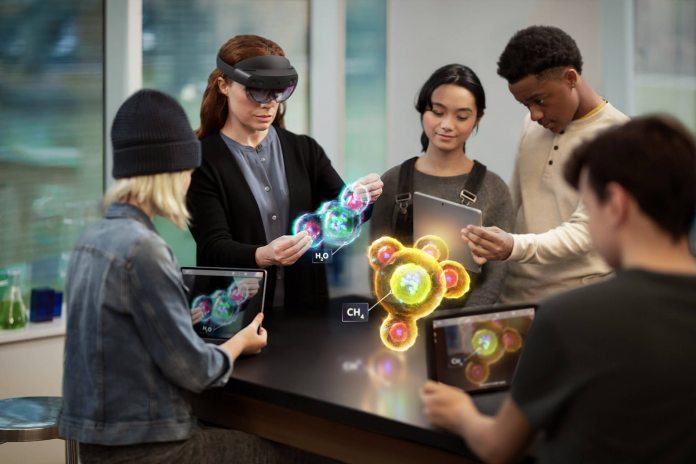Microsoft has continued its push towards open source solutions with the launch of Spatial Anchor, a new augmented reality platform. Announced alongside HoloLens 2 yesterday, Microsoft discussed Spatial Anchor as a tool for powering spatial awareness capabilities on the device.
As the name suggests, Spatial Anchor is not a persistent marker, but instead works when spatial awareness is needed. Microsoft says the apparatus will work alongside rival AR solutions like ARKit and ARCore, which are also supported on HoloLens 2.
In related documentation, Microsoft says, “a spatial anchor represents an important point in the world that the system should keep track of over time.”
Each anchor has a coordinate system that adjusts as needed, relative to other anchors or frames of reference, in order to ensure that anchored holograms stay precisely in place. Rendering a hologram in an anchor's coordinate system gives you the most accurate positioning for that hologram at any given time.
This comes at the cost of small adjustments over time to the hologram's position, as the system continually moves it back into place relative to the real world.”
Abilities
Spatial Anchor locks into Microsoft Azure cloud service to create various features:“By saving local spatial anchors to disk and loading them back later, your app can reason about the same location in the real world across multiple app sessions on a single HoloLens device
By using Azure Spatial Anchors to create a cloud anchor, your app can share a spatial anchor across multiple HoloLens, iOS, and Android devices. By having each device render a hologram using the same spatial anchor, all users will see the hologram appear at the same place in the real world. This allows for real-time shared experiences.
You can also use Azure Spatial Anchors for asynchronous hologram persistence across HoloLens, iOS, and Android devices. By sharing a durable cloud spatial anchor, multiple devices can observe the same persisted hologram over time, even if those devices are not present together at the same time.”






